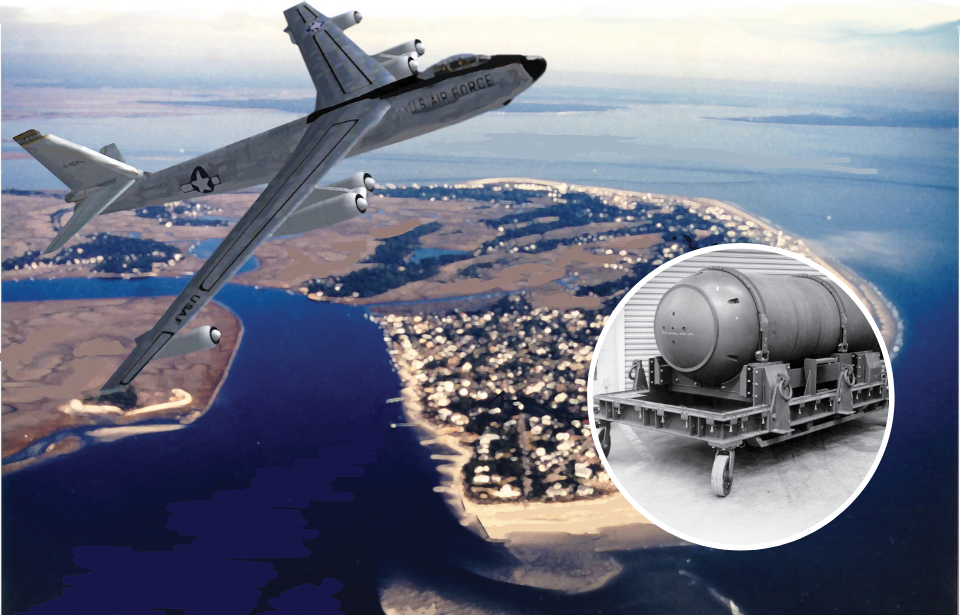Just off the coast of Tybee Island, near the city of Savannah, Georgia, lies a Mark 15 nuclear bomb that inadvertently plunged into the water during a US Air Force aircraft mishap in the 1950s. Resting on the seabed of Wassaw Sound, the device remains in a state of suspense, patiently awaiting discovery – or, in a worst-case scenario, the potential for detonation.
The cause for concern arises from the disconcerting revelation that, contrary to the initial assurances regarding the removal of the nuclear core, documents have surfaced indicating that it still resides within the device. This suggests that the Mark 15 continues to present a potential threat to the residents of the area.
Mid-air collision over Tybee Island
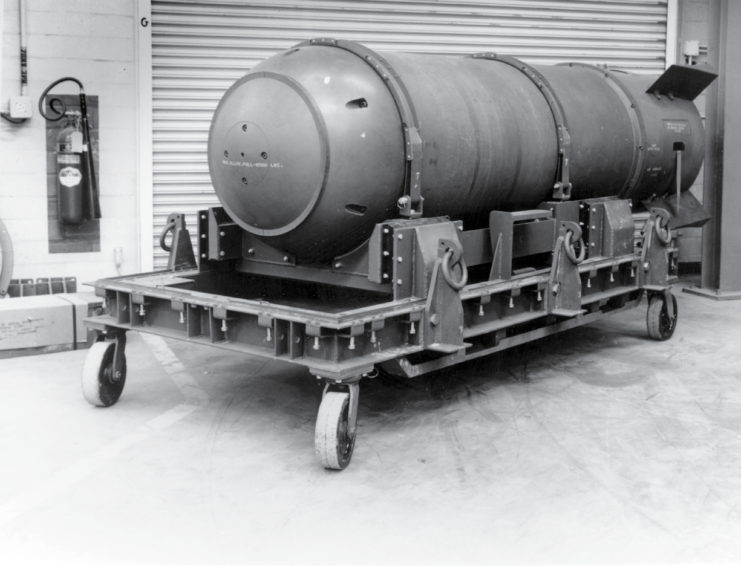
On February 5, 1958, while performing a simulated combat mission exercise, a Boeing B-47 Stratojet was involved in a mid-air collision with a North American F-86 Sabre. The B-47, having taken off from Homestead Air Force Base, Florida, was carrying a two-man crew, as well as a 7,600-pound Mark 15 nuclear bomb.
The F-86’s pilot, Lt. Clarence Stewart, hadn’t seen the B-47 on his radar and descended directly on top of it. The crash between the two caused the left wing of the fighter jet to completely rip off, while the bomber’s fuel tanks suffered heavy damage. Stewart was able to eject before his aircraft crashed, while the pilot of the B-47, Lt. Col. Howard Richardson, sought the closest landing base. Despite the damages to the bomber, the B-47 remained airborne. After dropping 18,000 feet, Richardson regained control.
As for the nuclear bomb onboard the aircraft, he granted the crew’s request to jettison it, to prevent it from exploding during the emergency landing. The bomb was dropped from 7,200 feet, over the shores of Tybee Island. The pilot and crew reported no explosion upon it meeting the water, and they were able to successfully land the damaged B-47 at Hunter Army Airfield, Georgia.
For his actions, Richardson was awarded the Distinguished Flying Cross.
A search force was sent to find the bomb
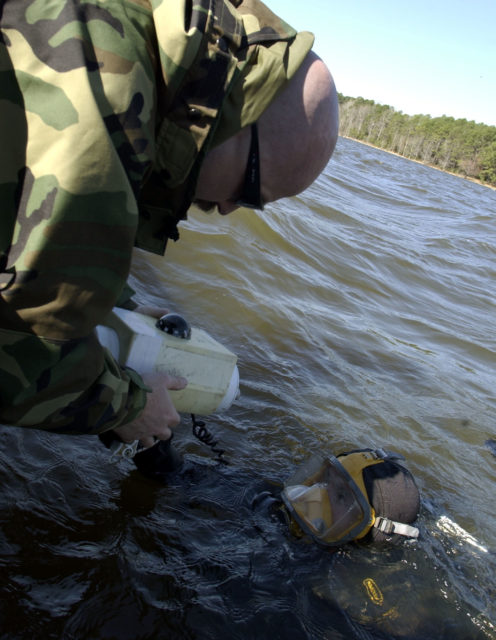
The day following the collision, the search for the missing bomb was initiated. This operation engaged the US Air Force’s 2700th Explosive Ordnance Disposal Squadron, along with 100 US Navy personnel. Armed with handheld sonar devices and employing cable sweeps, the search persisted for nearly 10 weeks.
On April 16, the military announced their inability to locate the explosive device.
Several decades later, in 2001, the Department of Energy conducted a hydrographic survey of Wassaw Sound, revealing that the Mark 15 was likely buried beneath a layer of silt at a depth ranging from five to 15 feet. The military subsequently acknowledged this as the probable location of the explosive.
Was the Mark 15 nuclear?
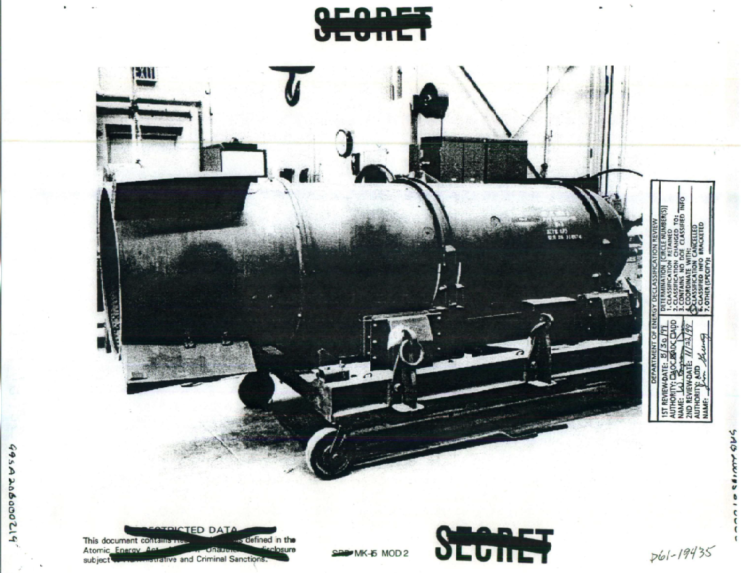
Since its disappearance, there’s been an ongoing debate regarding the nature of the missing weapon – whether it was nuclear or not. If it possessed a plutonium core, it would be deemed a fully functional nuclear device. Alternatively, if the core was replaced with a dummy, it would be non-nuclear, but still capable of generating a conventional explosion.
The US Air Force provided assurance that the Mark 15’s “nuclear capsule” had been removed before the flight and replaced with a simulated 150-pound cap made of lead. Supporting this claim, documents from the Strategic Air Command emphasized that test flights in February 1958 weren’t authorized to carry bombs with nuclear capsules.
For a considerable period, this explanation was widely accepted. However, in 1994, a previously classified document containing the transcript from the 1966 Congressional testimony of then-Assistant Secretary of Defense W.J. Howard was declassified, revealing a contradiction to the Air Force’s assurances over the years.
During his testimony before the US Congressional Joint Committee on Atomic Energy, Howard admitted that the Mark 15 was a “complete, fully functional bomb with a nuclear capsule,” housing a plutonium trigger. If Howard’s testimony holds true, the bomb could still inflict significant damage on the surrounding area if detonated. The explosion would involve a fireball extending over a mile and thermal radiation detectable up to 10 miles in all directions.
Yet another search is launched
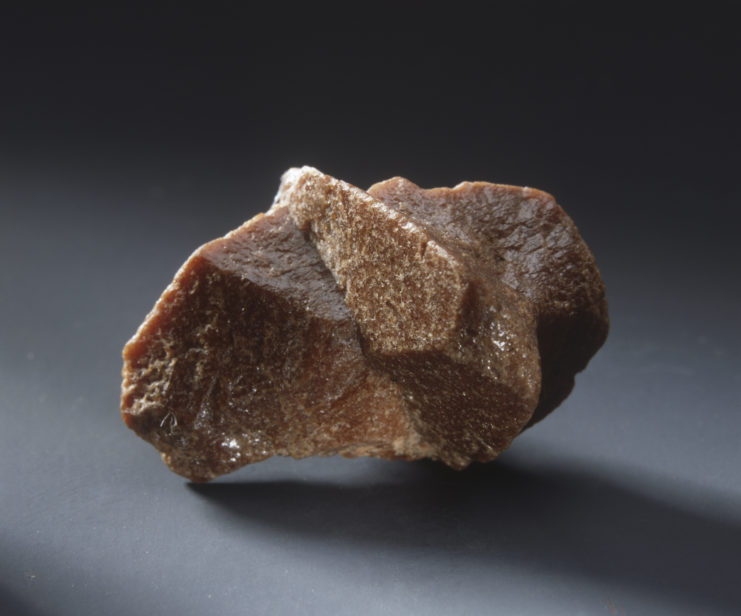
Armed with this newfound information, Air Force veteran Lt. Col. Derek Duke initiated a private search for the missing nuclear bomb in 2004. His team combed Wassaw Sound and employed a Geiger counter to measure radiation levels in the water.
Their investigation revealed elevated radiation levels near the top of Tybee Island – four times higher than naturally occurring radiation. This suggested that, if the bomb were nuclear, the Mark 15 might be nearby. By pinpointing where radiation levels spiked, they successfully mapped out and triangulated an area roughly the size of a football field.
However, a subsequent inquiry by the Air Force concluded that the heightened radiation levels were naturally occurring. They attributed the increase to the presence of natural deposits of monazite in the sand.
Consequently, the location of the missing Mark 15 remains a mystery.
Best to leave the nuclear bomb alone
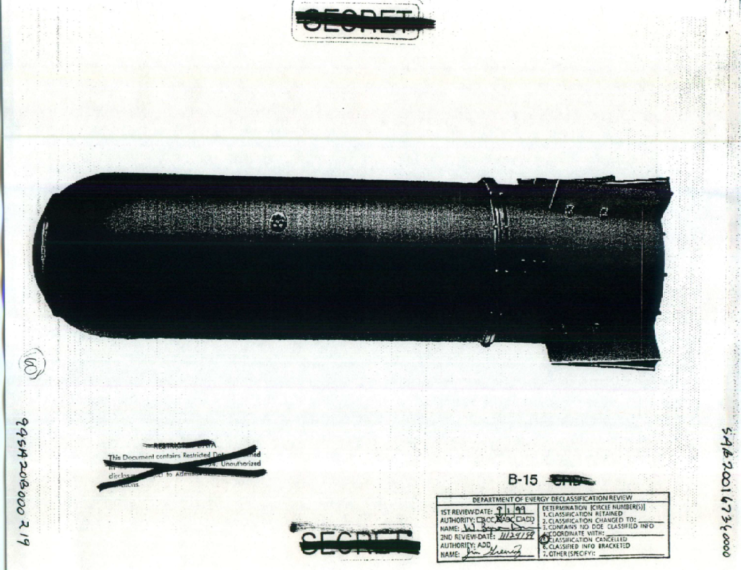
The Air Force is content with leaving the bomb’s location a mystery, and officials have assured residents in the surrounding area that it poses no threat, so long as it’s left alone. An “intact explosive would pose a serious explosion hazard to personnel and the environment if disturbed by a recovery attempt,” they stated.
More from us: Mars Bluff Incident: The US Air Force Accidentally Dropped a Nuclear Bomb on South Carolina
The next time you go diving near Tybee Island, keep an eye out for the 12-foot long, 7,600-pound Mark 15 nuclear bomb with the serial number 47782. If you spot it, leave the sleeping beast alone!
